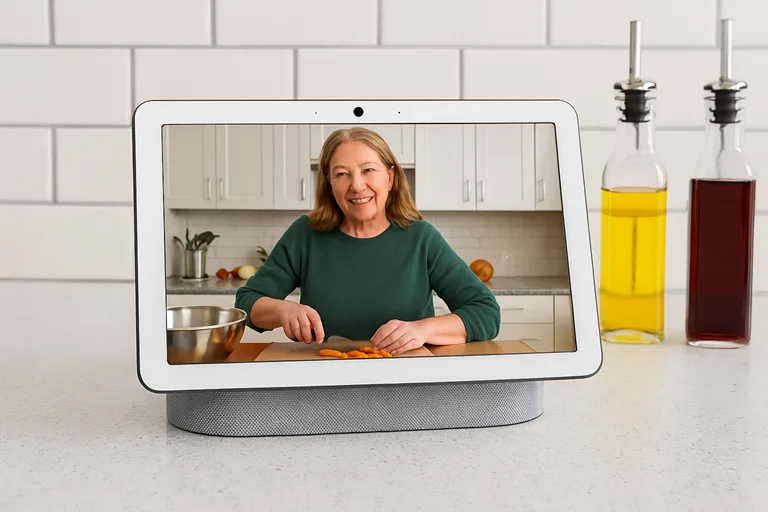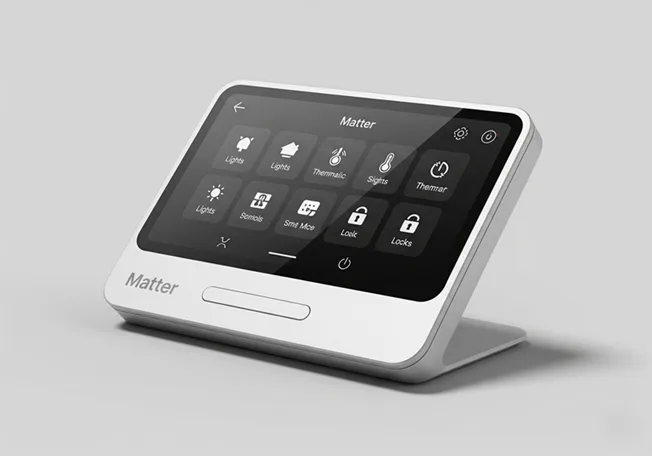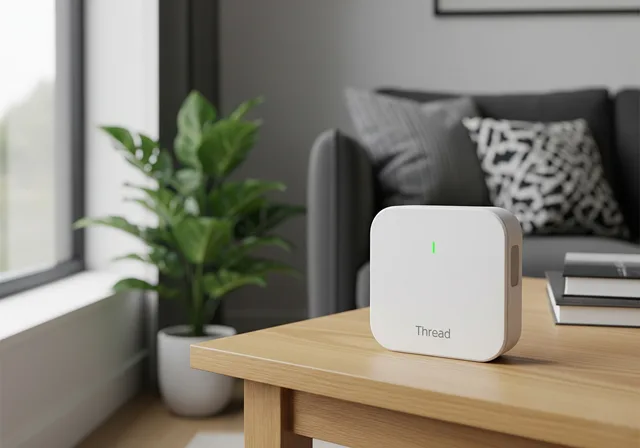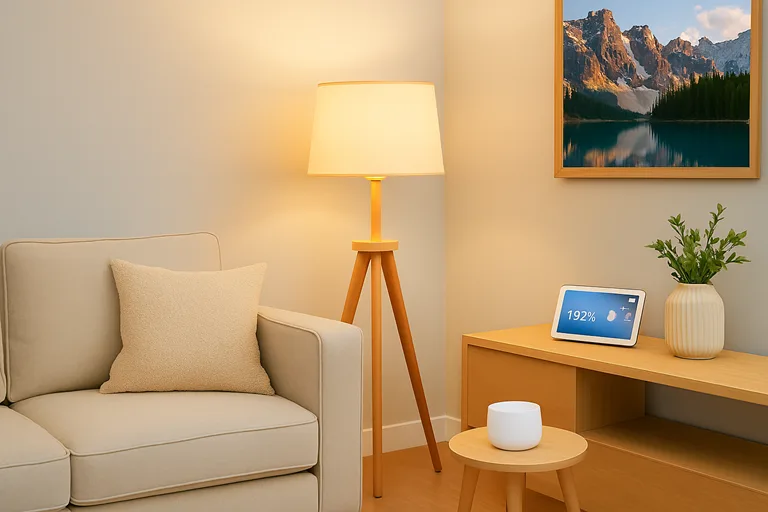For many, the promise of a smart home has often come with a frustrating reality. The experience of unboxing a new gadget, only to spend hours trying to get it to work with a different brand’s ecosystem, is a common one. It’s a world of “frantic app switching,” where devices from one company fail to “play well with others,” resulting in a “patchwork of compatibility” that is often unreliable and leads to intermittent failures. This fragmentation is the exact problem a new universal standard called Matter was developed to solve.
The introduction of Matter has, however, brought its own set of questions, and the most common one for consumers is, “Do you need a new hub for Matter?” It is a simple question with a nuanced answer that depends heavily on a user’s existing setup and their goals for home automation. This report will cut through the technical jargon, clarify the different components of a modern smart home, and provide a clear, confident path forward. By the time this is complete, a user will know precisely what they need—and what they don’t—to build a truly seamless smart home.
The Smart Home Puzzle: From Fragmentation to a Universal Language
The Problem with Smart Homes (and the Promise of Matter)
For many years, the smart home market has been made up of separate groups, each with its own way of talking and special rules. People had to pick one system, like Apple Home, Google Home, or Amazon Alexa, and then buy devices that only work with that one system, which is like a closed-off area.

This has led to significant consumer confusion and frustration, as products from different manufacturers often require separate hubs or are simply incompatible. It’s the reason why a person might find themselves “stuck in a garage” because a smart door opener has glitched, or “wandering around in the dark because the lights won’t turn on”. The absence of a common standard has led to major security issues, with a 124% rise in cyberattacks targeting smart home devices in 2024. Matter was created to fix this problem once and for all.
A Universal Language for Your Gadgets
Matter is an open-source connectivity standard created by the Connectivity Standards Alliance (CSA), a group of hundreds of companies, including tech giants like Apple, Google, Amazon, and Samsung. Its purpose is to act as a “universal language” that “enables smart-home devices from different manufacturers and on different protocols to easily work together”. By creating a shared application layer that works on top of IP, Matter sets up a solid base for smooth communication between different devices. This works no Matter what kind of network technology is used. Matter’s main advantages directly solve the main problems caused by a split-up market. First, its focus on interoperability means that a user can buy a Matter-certified device and be confident it will work with any of the major smart home platforms, eliminating compatibility headaches.
Second, its design as an IP-based local protocol means devices can communicate directly with each other without relying on a cloud server. This helps provide “lower latency and higher reliability,” which improves both performance and privacy, making sure devices keep working even when there’s no internet connection.
Third, Matter makes setup easier with a “standardized commissioning process” that uses QR codes and Bluetooth Low Energy.
Finally, Matter’s strong focus on security is a big part of why it’s so valuable.The standard includes strong security features such as AES-128 encryption and special device attestation certificates that verify if a device is genuine and secure before allowing it to connect to the network.
Deconstructing the “Hub”: The Three Key Roles
The term “hub” is a source of significant confusion for consumers because it no longer represents a single device with a single function. In the world of Matter, the role of a hub has been split into three distinct, yet often overlapping, components: the Matter Controller, the Thread Border Router, and the Matter Bridge. Understanding these three roles is fundamental to knowing if a user needs to purchase a new device.
The Matter Controller: The Brain of Your Smart Home
The Matter Controller is the central component of a Matter ecosystem. It is the device that a user interacts with as the “brain” of their smart home to set up and manage their Matter devices. It’s important to note that a Matter Controller is not necessarily a standalone hub; it can be a smart speaker, a smart display, a modern television, or even a smartphone. This isn’t simply about adding another device to someone’s setup; it’s about selecting the right control center that will help all their connected devices work together smoothly. Choosing a Matter hub is choosing a path toward a more intelligent, dependable, and safe connected home environment.

The Thread Border Router: The Network’s Gateway
While Matter is the universal language for devices to communicate, it relies on underlying network protocols. Matter can operate over Wi-Fi, Ethernet, and Thread.
Thread is a low-power, self-healing mesh networking protocol that is ideal for devices that run on batteries, such as smart locks, sensors, and motion detectors.
To function, a Thread-enabled device requires a Thread Border Router, which acts as a “gateway” that connects the Thread network to other IP-based networks, like Wi-Fi or Ethernet. A Matter over Thread device will not work on a user’s main network without one. The good news is that several newer Matter Controllers, like the Apple HomePod mini, Google Nest Hub (2nd Gen), and Amazon Echo (4th Gen), come with a built-in Thread Border Router.

Matter Bridges: Connecting the Old to the New
A Matter Bridge is a tool that helps devices with different communication methods to communicate. Its main job is to translate, so older devices that use protocols like Zigbee or Z-Wave can work with the Matter system. This is helpful for people who have spent a lot on older smart home devices and want to keep using them instead of buying new ones.
To make these ideas easier to understand, here’s a simple summary of the three main functions in a table.
| Component | Primary Function | Works With | Example Devices |
|---|---|---|---|
| Matter Controller | Setup & Control Matter devices (Wi-Fi, Thread) | Matter devices (Wi-Fi, Thread) | Amazon Echo Hub, Google Nest Hub, Apple TV 4K |
| Thread Border Router | Network Gateway | Thread devices | Amazon Echo (4th Gen), Google Nest Hub (2nd Gen), Apple HomePod mini |
| Matter Bridge | Protocol Translation | Legacy devices (Zigbee, Z-Wave) | Philips Hue Bridge, Aqara Hub M3 |
The Definitive Answer: Do You Actually Need a New Hub?
The answer to this central question depends on a user’s current situation. There is no one-size-fits-all answer, but by breaking it down by user profile, the path becomes clear.
For the Smart Home Beginner
For someone just starting their smart home journey, the answer is a resounding “no.” A user does not need to buy a standalone hub with a new, distinct function. Instead, they should invest in a foundational device—a Matter Controller—that can serve as the brain of their smart home. The best way to go is to buy a single device that does the job of both a Matter Controller and a Thread Border Router. Devices like the Amazon Echo Hub, Google Nest Hub, and Apple HomePod mini are great options because they handle both tasks easily.
For Users with an Existing Ecosystem
If a user already has smart devices, they might not need to buy a new device at all. Many of the smart speakers, displays, and streaming devices that people already own have been upgraded via firmware updates to function as a Matter Controller. The key is to check if an existing device is a Matter-enabled hub for a given ecosystem, such as Google Home. This allows a user to seamlessly add new Matter-certified devices to their current setup and control them from their familiar app.
For the Legacy Device User
For those with a house full of older Zigbee or Z-Wave devices, the situation is more complex. These devices do not natively speak the Matter language, so a special component—a Matter Bridge—is required to act as a translator. For example, a user with a Philips Hue lighting system must check if their existing Hue Bridge has received the Matter-enabling firmware update.
The following table provides a quick-reference guide to some of the most popular Matter-capable devices on the market, each serving as a gateway to a seamless smart home experience.
| Product | Approx. Price | Protocols Supported | Best For |
|---|---|---|---|
| Amazon Echo Hub | $180 | Wi-Fi, Thread, Zigbee, Sidewalk, Matter. | Users who want a central control panel with a touch screen for their Alexa ecosystem. |
| Google Nest Hub Max | $229 | Wi-Fi, Thread, Matter | Users in the Google ecosystem who want a large display and strong voice control with a built-in Thread Border Router. |
| Apple HomePod mini | $99 | Wi-Fi, Thread, Matter | Users in the Apple ecosystem who want a compact, HomeKit-enabled smart speaker that also serves as a Thread Border Router. |
| Samsung SmartThings Station | $80 | Wi-Fi, Thread, Zigbee, Matter. | Users who already have a SmartThings setup and are looking for a hub that supports both Zigbee and Thread. |
Your Step-by-Step Action Plan to Go Matter-Certified
This process is designed to be simple, allowing a user to build or expand their smart home confidently.
Step 1: Audit Your Devices and Network
It is a good practice to take a moment to assess the existing setup before purchasing any new devices. First of all, you have to determine if any of your current devices can already function as a Matter Controller, such as a smart speaker or smart display. The initial setup process, called “commissioning,” requires a mobile device with Bluetooth enabled to scan a unique QR code on the new device. Android users should have a phone running Android 8.1 or newer, and iPhone users need a device with iOS 16 or higher. Also, your home internet connection must have IPv6 turned on so that Matter works correctly.
Step 2: Choose Your Primary Ecosystem
While Matter allows devices from different brands to work together, it is still recommended that a user choose a single primary ecosystem—whether it’s Apple Home, Google Home, Amazon Alexa, or Samsung SmartThings—to serve as the main control center for their smart home. This is because advanced tools and features are usually connected to a particular platform, and concentrating on one system can create a smoother and easier experience for users.
Step 3: Add Your First Matter Devices
Adding a new Matter device is designed to be a simple, almost magical, experience. A user needs to find the unique Matter QR code or numeric setup key on the device or its packaging. After that, they open the app for their selected ecosystem and use the “Add Device” feature to scan the code. The app then walks them through the steps to connect the device to their network.
Step 4: Use Matter’s Multi-Admin Feature
One of the most powerful and unique features of the Matter standard is its “multi-admin” capability, which allows a single device to be controlled by multiple platforms simultaneously. This gives you great freedom and lets each person in the house use their favorite app to control devices without having to repeat the setup or pick just one app to use.
The State of Matter: Reality vs. The Promise
The smart home market is booming, with a projected value of USD 147.52 billion in 2025, and this rapid growth underscores the urgent need for a unified protocol like Matter. The standard is still maturing, but its fast pace of development—with new versions released biannually—is a promising sign that it is the long-term solution for the industry.
The quick growth of the standard is a good sign. Version 1.0 added support for simple devices such as lights, locks, and thermostats, and it was released in October 2022. After that, more devices have been included. Version 1.2 added nine new types, such as refrigerators and robotic vacuum cleaners, was released in October 2023. Version 1.3, which added support for water and energy management systems, as well as appliances such as ovens and microwaves, came out in May 2024. In November 2024, Version 1.4 was released, introducing support for electric vehicle chargers and heat pumps.
However, for a user considering a transition, it is essential to be aware of the current limitations. The research indicates that while Matter works, it is not yet the “seamless” experience that its creators envisioned. For some devices, Matter only exposes basic controls, such as on/off and brightness, and more advanced features, such as custom lighting effects, remain locked within the manufacturer’s proprietary app. Besides that, important devices such as cameras and video doorbells aren’t included in the standard yet.
Even with these issues, Matter still provides a lot of value. It’s no matter, just about making things simpler—it’s about building a safer smart home. The protocol’s strong security features are a direct reaction to the 124% rise in cyberattacks on smart home devices. Matter creates a solid base for real devices and safe communication, making it a necessary choice for protecting both people and property. As the standard keeps improving with support from big companies, the issues with features and device compatibility will get better over time.
FAQs
Q: What is the difference between a Matter hub and a Thread border router?
A: A Matter hub is a term for a Matter Controller, the device that acts as the “brain” of your ecosystem and manages all your Matter devices. A
A Thread border router is a specific type of device required to connect Matter over Thread devices to your home Wi-Fi or Ethernet network. Many modern devices, like the Amazon Echo (4th Gen) and Apple HomePod mini, act as both a Matter Controller and a Thread Border Router, making it easier to set up your smart home network.
Q: Does Matter replace my existing Matter platform, like Alexa or Google Home?
A: No, Matter does not replace your existing platform. It instead works with all the main smart home systems, like Alexa, Google Home, Apple HomeKit, and Samsung SmartThings. Matter functions as a common language that enables one device to operate smoothly across all these systems, offering you greater flexibility in your choices.
Q: Can Matter devices work offline?
A: It instead works with all the main smart home systems, like Alexa, Google Home, Apple HomeKit, and Samsung SmartThings. Matter functions as a common language that enables one device to operate smoothly across all these systems, offering you greater flexibility in your choices.
Q: Do I need a bridge to use my old Zigbee devices with Matter?
It works with Matter major smart home systems, such as Alexa, Google Home, Apple HomeKit, and Samsung SmartThings. Matter acts as a shared language that lets different devices work together smoothly across all these systems, giving you more freedom in choosing your smart home devices.
Conclusion
The question of whether a user needs a new hub for Matter has been the source of consumer confusion since the standard’s introduction. Matterity, as this report has shown, is that the term “hub” has evolved. A user may not need to buy a brand-new device, but they do need a foundational device that can act as a Matter Controller and, for Thread devices, a Thread Border Router. This foundational device is the single most important choice a user can make to bring simplicity, security, and true interoperability to their smart home.
The Matter-enabled hubs of today are not the clunky, single-purpose hubs of the past. They are the gateway to an effortless smart home experience, allowing devices from different brands to work together in harmony, finally. This isn’t simply about adding another device to someone’s setup by selecting the right control center that will bring all their connected devices into harmony. Choosing a Matter hub is choosing a smarter, more dependable, and more secure path for the future of the smart home. The time to stop wrestling with a smart home and start enjoying it has arrived. It’s time to choose a Matter hub that simplifies everything and provides the foundation for an effortless smart home experience.


